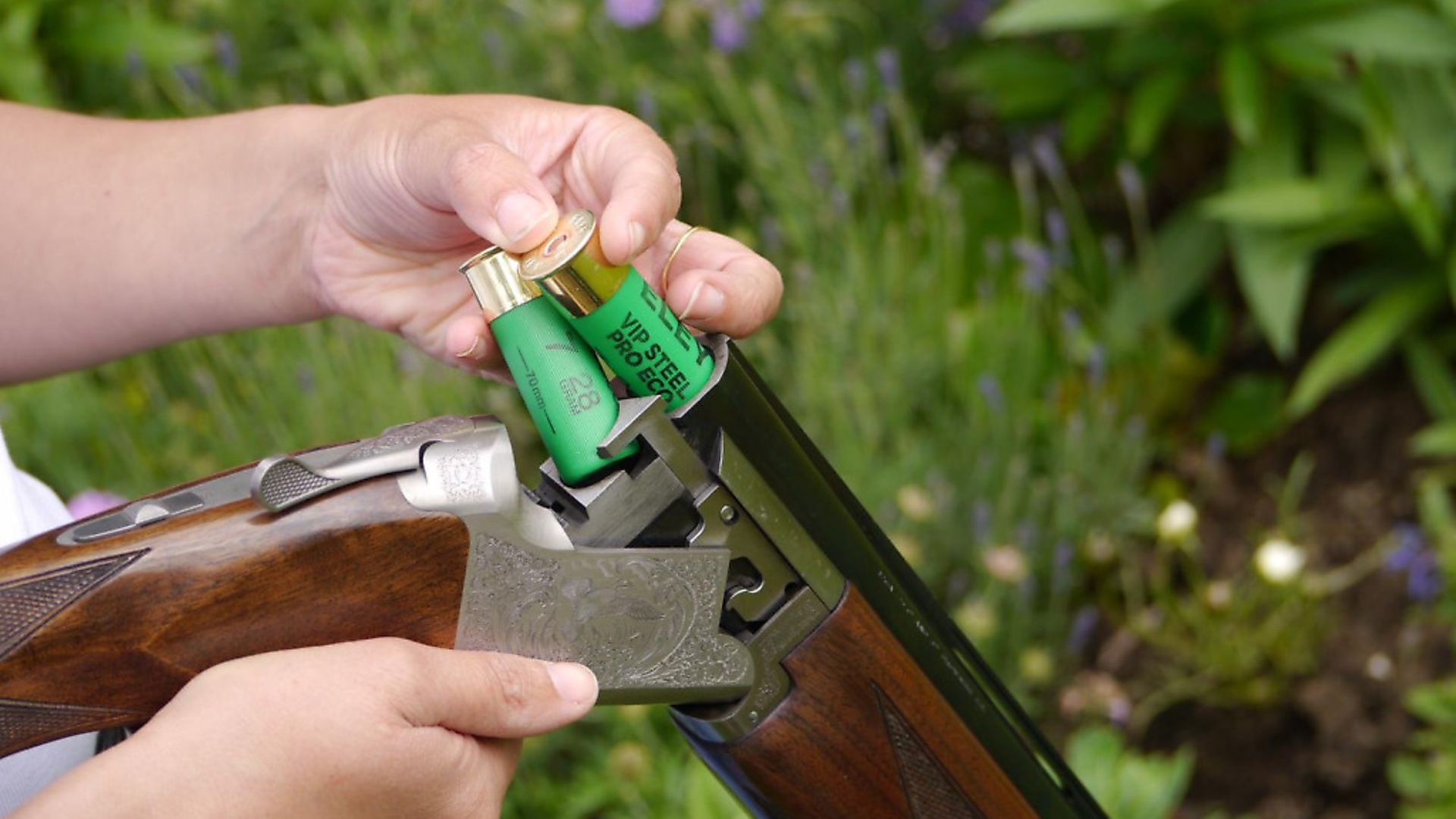What are the alternatives to lead shot? Will steel shot perform as well as lead? Can you shoot long-range birds with steel? We answer all these and more!
 credit: Archant
credit: Archant
So if we move away from lead, be that in five years time or some other timescale, what are the alternatives? Steel is seen as the most cost-effective option. “If switching from lead to another, lighter, material, a change of shot size is necessary in order to retain energy in each pellet down range,” says Diggory Hadoke, classic guns expert. “For example, lead No.6 at 40 yards delivers 2.3 ft/lbs. To emulate that with steel, you need a No.4 pellet, which actually delivers 2.5 ft/lbs. At 60 yards, lead No.6 delivers 1.3 ft/lbs and steel No.4 delivers 1.4 ft/lbs.
“Steel can carry the same energy, but 1oz of No.6 equals 270 pellets, while 1 oz of No.4 equals only 192, so the pattern will be far less well filled. Since a combination of penetration and shock is required to kill cleanly, the more open, large shot pattern is likely to result in more wounded and more missed birds, so the payload will need to be increased to compensate. At basically seven pellets per gram, you need to increase from 28g of No.6 to 38g of No.4 and you would still only be at a pellet count of 260; 10 fewer pellets than the lead equivalent.
“So much for the theory, Lewis Potter’s recent pattern testing results suggested that a 32g load of steel will deliver good killing patterns through Half choke at 30 yards. In terms of energy delivery down range, you need to be pushing large steel loads hard in order to emulate your standard lead game load. However, steel patterns much tighter than lead for any given choke so anyone switching to steel shot should pattern their gun and see exactly how the two compare before settling on a load for game shooting. Felt recoil is also a factor in older guns. Trying a range of steel loads will indicate how ‘punchy’ they feel in your gun and whether they will be too unpleasant to shoot in large quantities.
“Steel shot, though about a third lighter than lead, is much harder. This means it does not deform in the barrel to the extent lead does and it does not deform on impact with the quarry. Steel is more prone to exit, while lead hunting loads are deliberately kept relatively soft so the energy is transferred to the quarry and retained, producing more impact and shock, which is important for clean kills, rather than inflicting mortal but not immediately lethal wounds.
“If we ignore its toxicity, lead remains the most effective projectile for shotguns. We have debated the effects of lead in the environment and its toxicity for decades. There are still strong advocates for it – even though the public and the authorities appear to be on a drive to remove lead from the environment.”
 credit: Archant
credit: Archant
What alternatives are there to lead shot?
There are already steel products on the market ready for shooters to use, including Eley Hawke’s VIP Steel Pro Eco Wad, which is a standard 70mm cased steel load suitable for any nitro proof stamped gun with 70mm chambers. Nick Levett-Scrivener, MD of cartridge distributor Shooting Star, says he has two products ready to go and ready to meet demand. The first is a French brand, Jocker, which produces a steel load with a cardboard wad. This brand also has a new type of shot made up of nickel, zinc, bismuth and aluminium. “I’ve shot it,” says Nick, “and it shoots well – it kills ducks stone dead.” The Jocker cartridge is currently only available in 12-bore, but there are plans to develop it for bores from 10-bore to .410. The other brand is BioAmmo, which offers steel shot cartridges with a biodegradable wad AND cases. Again, it is only currently available in 12-bore form, but with €8 million currently invested in development, we can expect to see loads for other calibres at a later date. Go to www.bioammo.es for more details.
Nick believes our scepticism of steel is misguided and often based on old prejudices. “In the old days, people thought steel was too light,” he says, “but that is if you are looking at No. 6 shot. You just need to move two shot sizes: a 28g No.4 shot of steel is perfectly capable of killing a pheasant at 40 yards.”
Marcus Simpson at Simpson Brothers gunshop adds: “For most of the local shoots where the birds are 20-30 yards, steel would be perfectly adequate. But if birds are processed on site and given to the Guns, would they even bother switching to steel in the short term? And if it is all voluntary – who is going to be checking enforcement anyway?”
Returning to Nick, he believes that we have to accept where we are now with the proposed transition away from lead and just get on with it. “If we can get back to a mentality where people treat their guns and their shooting as they did in the 1920s, we won’t go far wrong,” he says. “So, you use a bigger gun if you want to fire a bigger load, and a smaller gun for a smaller load. Will people buy into that? I don’t know, but I believe somebody’s got to start that story.” While Nick believes people will eventually accept a change, he doesn’t think they’ll do so voluntarily. “It will be because of legislation,” he concludes.
To find out if and where you can get your gun proofed for steel, click here
To read about the European backdrop to the phasing out of lead, click here
To read about how supermarkets are putting pressure on game dealers for lead-free meat, click here